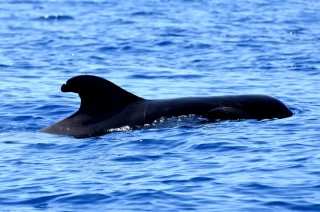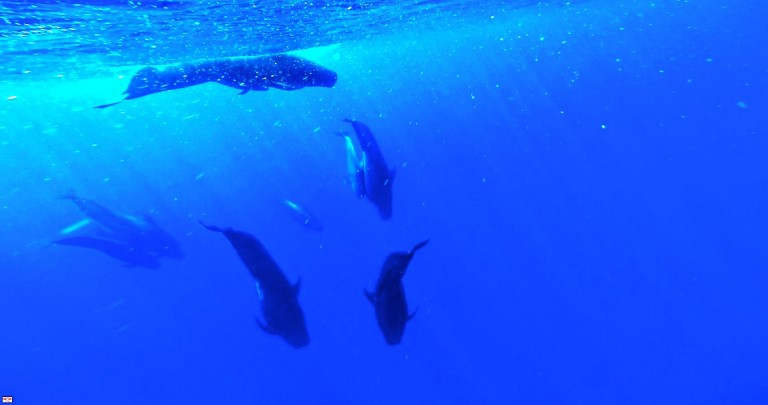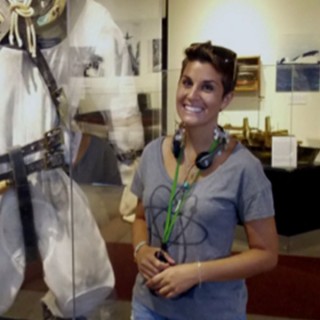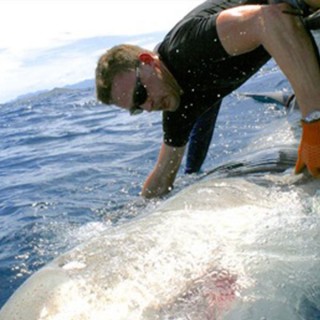What a great morning to be a Marine Mammal Observer (MMO). After two gloomy days with nothing but our thoughts and a few humpback whales to keep us occupied, we were glad to see the sun come out and to finally get sightings of a target species. The first came around 8 a.m. when Katie Lubarsky spotted a few short-finned pilot whales far off our starboard bow.

The crew maneuvered Falkor closer to the pod, and soon other MMOs spotted different small groups of pilot whales all around the ship. Our job was to observe and record their behaviors, to take photos for identification purposes, to make sure the ship maintained an appropriate distance from the whales, and to keep an eye on as many animals as possible. Meanwhile, the crew quickly prepared the small boat so we could head off and sample nearby.
Small Advantage
The small boat aids marine mammal searches by allowing us to gather important data and ensuring that Falkor does not approach too closely. Two crew members drive the 6.3-meter Atreyu jet boat, which is powered by a 350-horsepower engine, along with three to six science team members. [See the video below for more about small boat operations.]

The small boat is lowered off Falkor with crew members aboard, while the scientists assemble at the “staging area” towards the stern. The crew brings Atreyu around and we board by descending a rope ladder. It is a little tricky going from one rocking vessel to another, but the task is safely and easily completed with the help of the crew.
We use the small boat to either take pictures of a pod of whales that observers on the ship are tracking, or to search for whales farther away from the ship.This boat is really quick, which means we can cover a large distance in a short time, increasing the chances of spotting or hearing marine mammal activity.
We stop the small boat at random locations and lower a hydrophone, or underwater microphone. We attach headphones to the hydrophone and carefully listen for any whale sounds. Our ears are excellent searching tools because they have a far greater range than our eyes. Humpback whales, with their low, melodic songs that travel long distances, are heard most often. But our goal is to detect and record the clicking sounds odontocetes (toothed whales) make while they are hunting.
Beyond Discombobulation
It turns out that even with four observers on the R/V Falkor and the small boat it was no easy task to keep track of all the whales.The animals and the ship were constantly moving, and at least one observer was usually occupied with recording data. We were admittedly a little discombobulated during the first sighting, but as the day wore on and we sighted more pilot whales, we became much better at delegating tasks and communicating the animals’ positions.
By the late afternoon, things quieted down and sightings became infrequent. We continued observing until sundown, relieved that we were finally able to find the whales we came out here to study in our attempt to unravel the mystery of their secret lives. Now the team is a well-oiled machine, ready for many more sightings.



